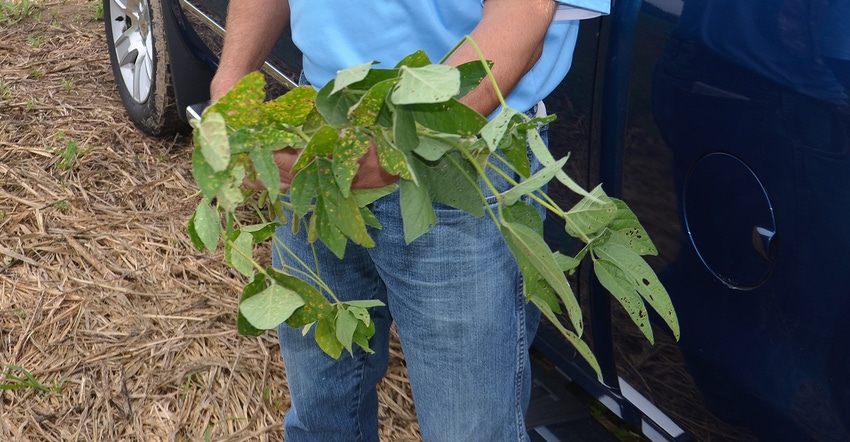
If you want to assess the value of seed treatments for sudden death syndrome, 2020 is a good year to do it. Steve Gauck says in much of the eastern Corn Belt, 2020 featured conditions that favored SDS.
“Many soybeans were planted in April and May, and then it turned cool and wet in most cases,” says Gauck, regional agronomy manager for Beck’s, based near Greensburg, Ind. “The fungus that causes the disease is soilborne, and it infects young soybean plants in the vegetative stage when soils are saturated.”
Even though infection occurs early, it doesn’t show up until later in the season, when soybeans are in the reproductive stage. The first symptom is often necrosis, or dying of tissue, between leaf veins. Yellowing also accompanies necrosis. Nutrients may still move up and down inside the stem, but flow is often restricted. That helps contribute to yield loss. In severe infections, plants will die early, before natural senescence at the end of the season occurs.
Where seed treatments fit
Gauck dug up two plants growing side by side in the Soybean Watch ’20 field in September to illustrate how SDS can infect some plants and not others. Beck’s sponsors Soybean Watch ’20.
“Some people think that if one plant is infected, it will spread to its neighbor and infect it as well,” Gauck says. “That’s not how the disease works. Typically, all plants aren’t infected. And once you see the symptoms, there won’t be additional spread from plant to plant. The infection period occurred much earlier.”
Growers who apply a fungicide seed treatment for control of SDS sometimes notice SDS symptoms in their field and assume the fungicide didn’t work. They don’t believe they received a return on their investment.
“You need to look at how many plants are affected and how many aren’t infected by the disease,” Gauck says. “No fungal seed treatment for SDS is 100% effective. You may still find some plants that develop symptoms.
“The difference in most cases is that if you applied a seed treatment, there will be only perhaps a plant here and there infected. If no fungicide for SDS was applied, you could expect many more plants to show symptoms of the disease.”
Don’t expect control of SDS from common fungicide seed treatments that don’t include SDS on their label. There are two commonly used chemical fungicides today that are effective, plus a biological-based fungicide, which Beck’s currently uses, Gauck says.
You also need to factor in how long the fungicide seed treatment was in the soil before conditions favoring infection developed, he says. “If you planted soybeans very early and it turned cool and wet in mid-May or later, the fungicide may have lost some of its effectiveness by that time,” he explains.
This is a good year to study results from SDS fungicide trials, Gauck concludes. Compare cost of the seed treatment for SDS control to yield advantage where soybeans were treated.
About the Author(s)
You May Also Like




